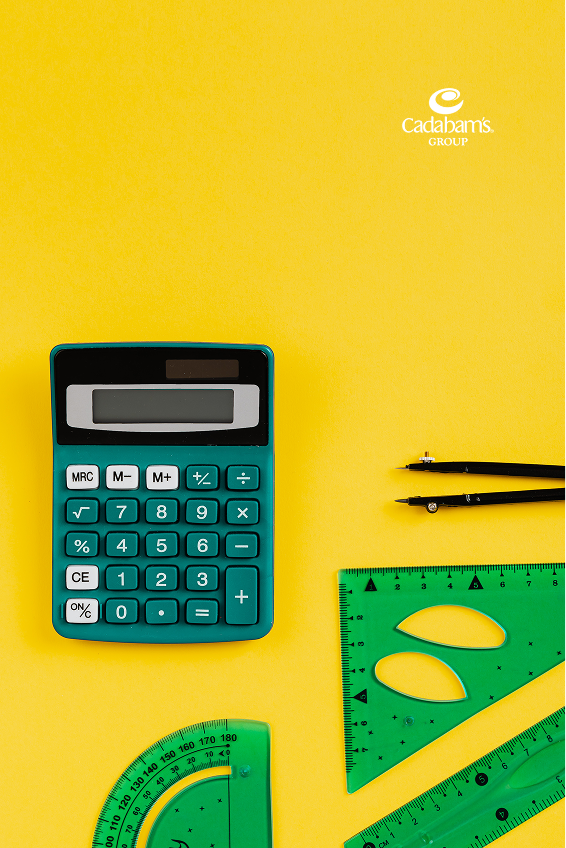Specific Learning Disability
Understanding specific learning disabilities requires recognising that they are neurodevelopmental disorders affecting the brain's ability to receive, process, store, respond to, and communicate information. This deep dive explores various types, including dyslexia, dyscalculia, and dysgraphia. It highlights their impact on learning and daily life and emphasises the importance of early identification, support, and effective SLD treatment, as well as tailored strategies for individuals.
SLD can cause stressful situations in the lives of the children and the parents. It is important to understand the signs of SLD early and to seek help. Seeking early treatment is the key to solving the issues faced by the child and helping them have an enjoyable childhood and future. Cadabams leverages its experience in the field of mental health to bring to you dedicated care for children with SLD.
Key Symptoms of Specific Learning Disabilities(SLD)
How to Recognise SLD in Preschool Children
- Speech delays
- Difficulty with letters/numbers
- Fine motor skill challenges
- Trouble following directions
- Short attention span
Common Behavioural Symptoms in Children with SLD
- Avoids challenging tasks
- Inconsistent performance
- Behavioural issues
- Disorganisation
- Low self-esteem
- Emotional outbursts
Our Professionals
Causes of SLD
SLD can arise from a complex interplay of factors affecting the brain's development and ability to process information. While the exact cause of SLDs is not always identifiable, research has pointed to several contributing factors:
Family history and genes
A significant risk factor for SLDs is genetics. Children with a family history of learning disabilities are more likely to experience similar challenges, suggesting a hereditary component in the development of SLDs.
Risks before birth and shortly after
Prenatal and neonatal factors, including maternal illness, low birth weight, and oxygen deprivation, can increase the risk of SLDs. Exposure to substances like toxins, such as alcohol and drugs, during pregnancy also plays a role.
Emotional trauma
Experiencing emotional trauma, especially in early childhood, can adversely affect cognitive and emotional development, potentially leading to learning disabilities. Chronic stress and trauma can hinder attention, memory, and information processing.
Physical trauma
Physical trauma, such as head injuries, can impact brain function related to learning and memory. Injuries affecting brain areas responsible for language, reading, and mathematical reasoning can contribute to developing SLDs.
Risk Factors for SLD
Risk factors for SLD include genetic predisposition, environmental exposures such as substance or lead exposure, prenatal and neonatal complications, malnutrition, and insufficient early childhood interactions that stimulate cognitive and language development.
Environmental Factors
Exposure to harmful substances in the womb, such as alcohol, drugs, or tobacco, can adversely affect brain development. Lead exposure, whether prenatal or early childhood, can also contribute to learning disabilities by affecting cognitive and neurological functioning.
Genetic Predisposition
A family history of learning disabilities suggests a genetic component, increasing the risk of SLDs. Children with parents or siblings who have learning disabilities are more likely to experience similar challenges.
Prenatal and Neonatal Difficulties
Complications during pregnancy or birth, including premature birth, low birth weight, and lack of oxygen, can contribute to the development of SLDs by affecting brain development.
Malnutrition
Early childhood malnutrition, particularly deficiencies in essential nutrients, can impact brain development and cognitive functions, increasing the risk of learning disabilities.
Lack of Interaction from Parents
Early childhood interactions that stimulate cognitive development are crucial. A lack of enriching interactions, such as reading, talking, and playing, can hinder language, social, and cognitive skills, potentially leading to learning difficulties.
Specific Learning Disabilities Recovery Guide
Understand the various aspects of this condition

Types of Specific Learning Disorders(SLD)
There are three prevalent SLDs, including dyslexia, dysgraphia and dyscalculia.
Dyslexia
Dyslexia involves difficulties with accurate and/or fluent word recognition and poor spelling and decoding abilities. It affects reading comprehension and the growth of vocabulary and background knowledge.
Dysgraphia
Dysgraphia affects writing abilities, making it hard to write clearly and at an appropriate speed. It can impact handwriting, spelling, and the ability to organise thoughts on paper.
Dyscalculia
Dyscalculia involves challenges with number-related concepts and affects the ability to perform arithmetic operations. It can lead to difficulties with understanding time, measurement, and spatial reasoning.
Severity Levels of SLD
The severity levels of SLD indicate how these disabilities impact an individual's academic performance and day-to-day activities.
Mild SLD
Individuals may experience some difficulties in one or two specific learning areas. Still, they can generally achieve success close to grade level with minimal interventions or accommodations, such as additional time for tasks or differentiated instruction.
Moderate SLD
These individuals face more significant challenges that affect multiple areas of learning. They require substantial accommodations and targeted interventions, such as specialised teaching strategies and possibly technology aids, to support their knowledge and help them reach modified academic expectations.
Severe SLD
Individuals with severe SLD encounter profound difficulties in learning across various domains. They need intensive, individualised support and interventions, including a modified curriculum, one-on-one tutoring, and comprehensive educational and psychological services, to assist their learning and daily functioning. Achieving grade-level expectations may be extremely challenging without significant and ongoing support.
Emergency service
Find nearest mental health center now

Rehabilitation for Specific Learning Disability
Rehabilitation for Specific Learning Disabilities focuses on tailored educational strategies, skill development, and support services to enhance learning outcomes and personal growth.
Rehabilitation for Children with Specific Language learning disorders
Rehabilitation often involves speech and language therapy to improve communication skills, enhance understanding and language use, and address listening, speaking, reading, and writing difficulties. Tailored interventions focus on expanding vocabulary and improving grammar and social communication.
Rehabilitation for children with written expression impairment
Interventions include specialised tutoring focusing on the writing process, including brainstorming, organising ideas, drafting, and revising. Occupational therapy may help improve handwriting skills, and assistive technology can offer alternative ways to express ideas.
Rehabilitation for kids who are impaired in mathematics
Mathematical interventions might include hands-on learning experiences, visual aids, and the use of technology to teach concepts. Strategies are designed to build foundational skills, enhance understanding of mathematical language, and develop problem-solving abilities.
Rehabilitation for children with reading difficulty
Reading interventions often involve phonics-based rehab programs, reading fluency training, and comprehension strategies to improve decoding skills, reading speed, and understanding of texts. Multisensory teaching methods can also be beneficial.
Rehabilitation for Specific Learning Disabilities
Rehabilitation for Specific Learning Disabilities encompasses a comprehensive approach that includes academic interventions, psychological support, and sometimes speech and occupational therapy. The goal is to address individual challenges, leverage strengths, and provide strategies for success in school and daily life. Practices such as repeated drills, personalised instruction, and assistive technology are common.
Guiding Children with SLD towards a Brighter Future with Cadabams Rehab Facility
Embark on a journey towards a brighter future for those with Specific Learning Disabilities at Cadabams Rehab Facility. Our comprehensive approach combines personalised education strategies, psychological support, and innovative therapies tailored to each individual's needs. Don't let learning challenges define potential. Discover the path to success and empowerment with Cadabams. Take the first step today for a transformative experience.
If you are searching for a solution to your problem, Cadabam’s Rehabilitation Centre for SLD can help you with its team of specialised experts. We have been helping thousands of people live healthier and happier lives for 30+ years. We leverage evidence-based approaches and holistic treatment methods to help individuals effectively manage their Specific Learning Disabilities (SLD). Get in touch with us today. You can call us at +91 96111 94949.
FAQs
1. What is a Specific Learning Disability(SLD)?
SLD is a neurodevelopmental disorder affecting reading, writing, or math skills unrelated to intelligence, motivation, or educational opportunity.
2. What are the early signs of dyslexia in children?
Early signs of dyslexia in children include trouble learning letters, matching sounds to letters, and remembering new words. Children may also have difficulty pronouncing words, mix up the order of letters, and struggle with rhyming. They might avoid reading aloud, read slowly, and find spelling hard. These signs often appear when they start learning to read, usually in preschool or early school years. Early help can make a big difference in managing dyslexia.
3. What treatment options are available for children with SLD?
Treatment includes tailored educational strategies, specialised tutoring, speech and occupational therapy, and assistive technology to enhance learning.
4. What is the difference between SLD and LD?
SLD refers to specific impairments in learning areas such as reading or math, while LD is a broader term encompassing various learning challenges.
5. Can children with SLD lead successful lives?
Absolutely. With the right support and interventions, children with SLD can overcome challenges, harness their strengths, and achieve personal and professional success.
6. Can Specific Learning Disabilities (SLD) be cured?
No, Specific Learning Disabilities (SLD) cannot be cured, but they can be managed effectively with the right support. Children and adults with SLD can improve their skills and overcome challenges through personalised education plans, therapy, and the use of assistive technology. With proper interventions, individuals with SLD can lead successful and fulfilling lives.
7. Can SLD affect a child's behaviour?
Yes, children with SLD may experience frustration and low self-esteem due to academic challenges, which can lead to behavioural issues like acting out or avoiding tasks.
Listen to Our Expert Insights on Specific Learning Disability
Our centres where we treat Specific Learning Disability
How is SLD diagnosed?
Diagnosing SLD is a multifaceted process that involves gathering comprehensive information from various sources to understand the nature of an individual's learning difficulties. This process typically includes:
Initial Considerations
Early identification efforts may begin with teachers or parents noticing difficulties in specific learning areas. Screening can help identify students who may need further evaluation.
Professional Evaluation
A thorough evaluation by a trained professional, such as a psychologist, educational psychologist, psychological counsellor or neuropsychologist, is essential. This evaluation assesses cognitive, academic, and linguistic abilities, as well as emotional and behavioural functioning.
School-Based Identification
Schools often have processes in place for identifying students with learning disabilities. This may involve response to intervention frameworks, where students are provided with increasing levels of support and monitored for progress.
Academic and Psychological Testing
Comprehensive testing assesses students' intellectual capabilities, academic achievements, processing skills, and emotional and behavioural profiles. These tests help pinpoint the specific areas of difficulty.
In-Depth Evaluation
An in-depth evaluation may include a variety of specialists, such as speech and language therapists, occupational therapists, psychologists, psychiatrists and neuropsychologists, to understand the full scope of the child’s needs.
Treatment Approaches for Specific Learning Disabilities
Helping children with Specific Learning Disabilities (SLD) requires different methods that target both learning and behaviour challenges. Here are some key ways to support children with SLD:
Tailored Education Plans for Children with SLD
Children with SLD benefit from personalised learning plans that address their unique needs. These plans may include:
- Modified teaching methods, such as breaking tasks into smaller steps or using visual aids.
- Classroom accommodations, like extra time for tests or using alternative learning materials.
- Progress tracking is used to check regularly how well the child is meeting academic goals.
Working together with teachers, specialists, and parents ensures the child gets the right support to succeed.
Role of Occupational Therapy in Treating SLD
Occupational therapy helps children with SLD develop essential skills needed for school and daily life. This includes:
- Improving fine motor skills, like handwriting or using tools like scissors.
- Building organisational skills to help with planning and completing tasks.
- Addressing sensory issues so children can focus better in noisy or busy environments.
Occupational therapy helps make school tasks easier and boosts a child’s confidence.
Using Assistive Technology for Children with SLD
Assistive technology can help children with SLD overcome learning challenges. Common tools include:
- Text-to-speech software, which reads aloud text for children who struggle with reading.
- Speech-to-text software allows children to speak their thoughts, which are then turned into text.
- Math software, which provides visual aids and interactive tools to help children understand math concepts.
These tools make learning more accessible and help children stay engaged in their education.
Behavioural Therapy for Managing SLD-related Challenges
Behavioural therapy helps children with SLD manage frustration and emotional challenges. It focuses on:
- Coping with frustration, teaching children how to handle stress or anxiety related to schoolwork.
- Improving social skills, helping children better understand and interact with others.
- Addressing behavioural issues, such as acting out in class or avoiding difficult tasks.
This type of therapy helps children manage the emotional side of learning difficulties, making school and social life easier.
How to Find a Qualified Specialist?
Those navigating the challenges of SLDs in their children understand that securing the right support is essential. Cadabams provides a network of qualified specialists dedicated to offering guidance through diagnosis and personalised intervention strategies. Uncertainties don't have to be a barrier. Reaching out to Cadabams connects parents with experts who comprehend the needs of their children and can guide them towards a successful path.
Get to Know Your Child’s Specific Diagnosis
It involves familiarising yourself with the nature of the disability, how it impacts learning and daily activities, and recognising its symptoms. By consulting with educational psychologists or specialists and engaging in your own research, you can gain insights into effective strategies and interventions. This knowledge empowers parents to advocate for their children's needs, ensuring they receive the appropriate accommodations and support to thrive academically and personally.
Request Classroom Accommodations
Seek accommodations like extra time on tests or modified assignments to support your child's learning needs. Communication with educators is crucial in implementing these adjustments effectively.
Create an Individualised Education Plan (IEP)
An IEP outlines tailored educational goals and support strategies. Collaborate with school staff to ensure it addresses your child's unique needs, promoting their academic success.
How to Manage SLD Effectively: Practical Tips for Supporting a Child
Helping a child with SLD can be easier with the right strategies. Here are some simple tips:
- Focus on Strengths: Celebrate what they’re good at, like art or problem-solving, to boost their confidence.
- Stick to a Routine: Set a daily routine for homework, breaks, and play. This keeps them organised and reduces stress.
- Break Tasks Into Steps: Split big tasks into smaller parts so they’re easier to handle and less overwhelming.
- Use Visual Aids: Use pictures or charts to explain things. Visuals help make learning clearer and more fun.
- Try Assistive Technology: Tools like text-to-speech apps can make reading and writing easier.
- Communicate with Teachers: Work with teachers to make sure they get extra help, like more time on tests.
- Stay Positive and Patient: Encourage effort, not just results. Praise small wins and be patient during struggles.
- Boost Self-Esteem: Help them feel proud of their efforts and remind them it’s okay to ask for help.
- Take Care of Yourself: Support yourself, too, so you have the energy to support your child.
These simple steps can help a child with SLD feel more confident and successful in their learning journey.
Subscribe to our newsletter
Find out about centres, daily updates and more about mental health

Why Cadabam's?
Cadabam's has been a pioneer in mental healthcare for over 3 decades now. We have treated a diverse range of mental healthcare disorders over this period and have built dedicated infrastructure to accelerate recovery.
Facilities & Amenities
Frequently Asked Questions
Absolutely. With the right support and interventions, children with SLD can overcome challenges, harness their strengths, and achieve personal and professional success.
SLD refers to specific impairments in learning areas such as reading or math, while LD is a broader term encompassing various learning challenges.
Treatment includes tailored educational strategies, specialized tutoring, speech and occupational therapy, and assistive technology to enhance learning.
Seek a professional evaluation, understand the diagnosis, and explore educational accommodations and interventions to support your child's learning needs.
SLD is a neurodevelopmental disorder affecting reading, writing, or math skills unrelated to intelligence, motivation, or educational opportunity.
Different types of SLD include:
- Dyslexia
- Dyscalculia
- Dysgraphia
- Dyspraxia
Case Studies
Our Programs
Our Testmonials
Blogs you may be interested in
Helpline at your fingertips
+91 9611194949

.webp)






-min.webp)



.avif)

-min.webp)

.avif)

.avif)
.webp)

